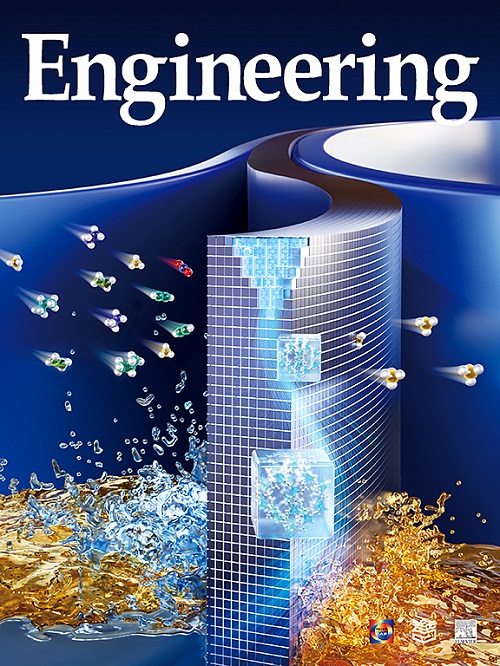Enhanced Denitrification in Constructed Wetlands with Low Carbon/Nitrogen Ratios: Insights into Reallocation of Carbon Metabolism Based on Electron Utilization
IF 10.1
1区 工程技术
Q1 ENGINEERING, MULTIDISCIPLINARY
引用次数: 0
Abstract
Constructed wetlands (CWs) are a promising method to treat effluent from wastewater treatment plants (WWTPs). However, low carbon/nitrogen (C/N) ratios of the influent inhibit denitrification in CWs, resulting in poor nitrogen removal efficiency. Herein, we compared traditional (control), biochar (BC), and β-cyclodextrin-functionalized biochar (BC@β-CD) CW systems to investigate nitrogen removal from influent with low C/N ratios, and the mechanisms that enhance this process. The highest nitrogen removal rates were observed in the BC@β-CD group, with rates 45.89% and 42.48% higher than those of the control, accompanied by a 70.57% and 85.45% decrease in nitrous oxide release, when the C/N ratio decreased from 4 to 2, respectively. Metagenomic and enzymatic analyses indicated that BC@β-CD enhances nitrogen removal by coordinately promoting carbon metabolism and increasing denitrification enzyme activities, without affecting microbial species diversity in CWs. Structural equation modeling confirmed that the foremost advantages of BC@β-CD were effective electron generation and transportation resulting from increased activities of nicotinamide adenine dinucleotide (NADH) dehydrogenase and the electron transfer system (ETS), thereby strategically reallocating more carbon metabolic flow to support denitrification. Our results show that the application of BC@β-CD in CWs to optimize the reallocation of electrons from carbon metabolism is a feasible strategy to enhance denitrification under low C/N conditions.
求助全文
约1分钟内获得全文
求助全文
来源期刊

Engineering
Environmental Science-Environmental Engineering
自引率
1.60%
发文量
335
审稿时长
35 days
期刊介绍:
Engineering, an international open-access journal initiated by the Chinese Academy of Engineering (CAE) in 2015, serves as a distinguished platform for disseminating cutting-edge advancements in engineering R&D, sharing major research outputs, and highlighting key achievements worldwide. The journal's objectives encompass reporting progress in engineering science, fostering discussions on hot topics, addressing areas of interest, challenges, and prospects in engineering development, while considering human and environmental well-being and ethics in engineering. It aims to inspire breakthroughs and innovations with profound economic and social significance, propelling them to advanced international standards and transforming them into a new productive force. Ultimately, this endeavor seeks to bring about positive changes globally, benefit humanity, and shape a new future.
 求助内容:
求助内容: 应助结果提醒方式:
应助结果提醒方式:


